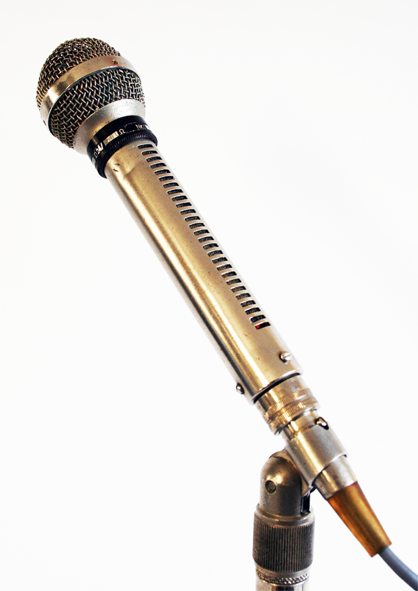|
The AKG D 24 was presented as early as 1956, along with the much more famous D 19, which became famous as 'the Beatles microphone' because of its use in the Abbey Road Studio, as overhead microphone for Ringo's drums.
Both microphones use the 'Variable D' technique, developed by Electro-Voice in 1954, to reduce the 'proximity effect'; because the sound also reaches the back of the cartridge through a number of ports in the housing, there is attenuation of the low frequencies when the microphone is used closely.
Both AKGs were fitted with a ring, just below the head, which allowed the ports to be closed off more or less, so that the user could decide for himself how much the bass was toned down.
There was a big difference in quality between the two models: the D 19 was intended for home use, with tape recorders, and for semi-professional purposes, the D 24 was specially developed for professional use in studios, for film and TV and as a vocal microphone on stage.
That difference was also clearly reflected in the price: the D 19 cost 150 D Mark at the time, the D 24 no less than three times as much: 450 D Mark!
The design of the D 24 was unique: a slender cylinder with an element shielded by a round wire basket. Not only did this provide an elegant appearance, it was later copied by all other microphone manufacturers and is the standard microphone shape today.
While the light weight made it easy for singers to lift the microphone from its stand, the adapter was closed, for the first few years, so the cord was always routed through the clamp, necassitating the performer to stay close to the micstand.
The sound quality of the D 24 was extremely good, which, along with its modest size, was the reason why these mics soon found themselves in the hands of the most popular entertainers, between 1956 and 1966, whether performing Rock & Roll, Jazz or Chansons. They were popular on both sides of the Atlantic.
One of the most famous users was Frank Sinatra, who utilised the D 24 not just on stage, but also in the studio, where he recorded the song 'It Was A Very Good Year' with it.
Even today this microphone can still be used for acoustic instruments such as guitar, and for vocals, although D 24s are not designed for heavy use; for grunts and hard rock it's sane to use a model that can handle a higher sound pressure.
The high purchase price is undoubtedly also the reason that there are many more D 19s to be found, only last year I managed to find a D 24 that I could add to my collection for a modest amount. D 24s, unlike the D 19s, were also not made as OEM, although they were sold in the US as Norelco (the Philips brand for the US market).
The AKG D 202 can be considered the successor to this remarkably successful microphone.
Many more types feature in my book Witnesses of Words. More information about that can be found at www.witnessesofwords.com
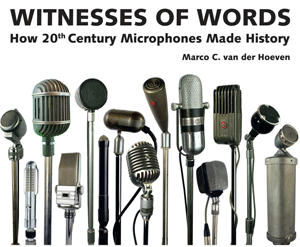
|
|
|
|
|
Top: two sides of the AKG D 24
Middle: the sleek and elegant D24 and the later and more plump Shure SM58
Below: sound, tech sheet and the Beatles, in the US, 1966 with AKG D24s
|
|
|
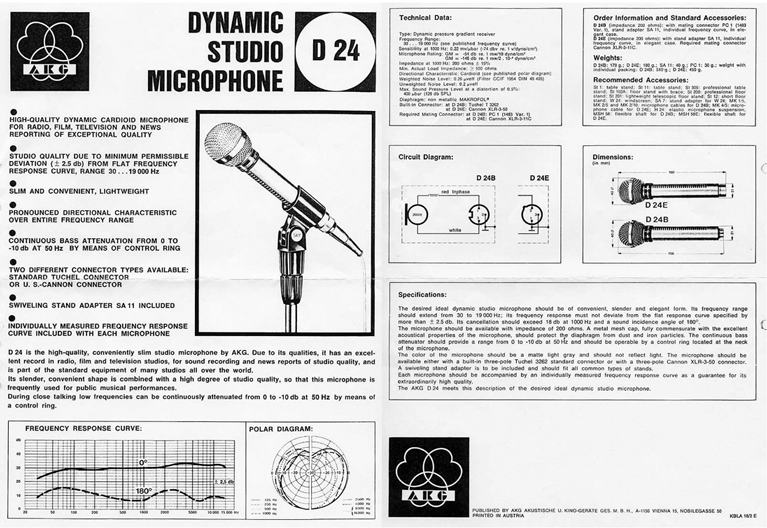 |
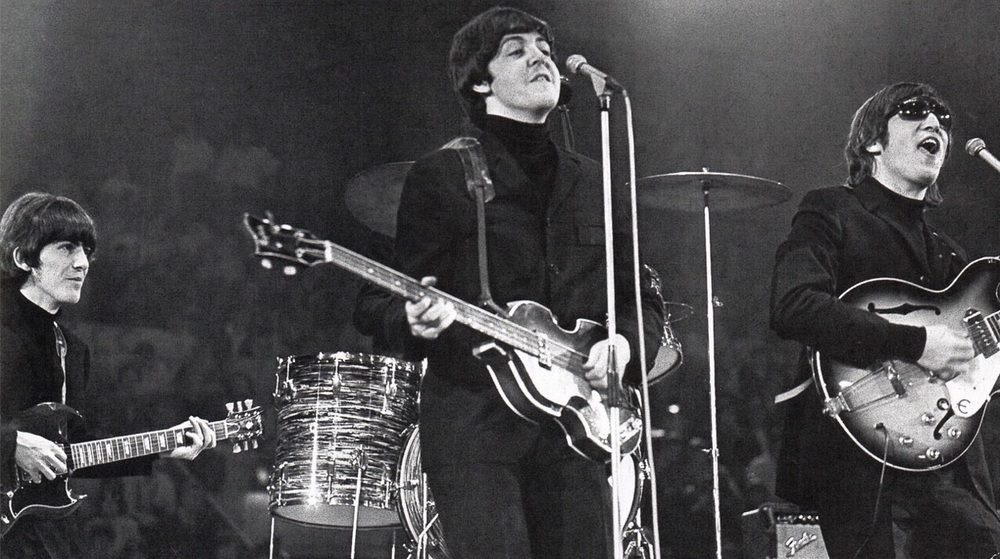 |
|

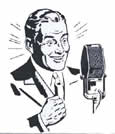
 Video's
Video's Contact
Contact


